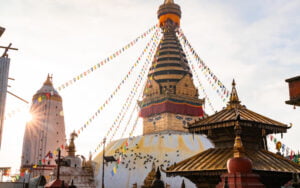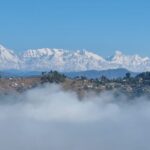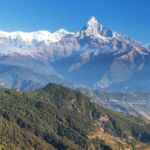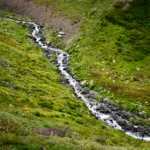A golden spire crowning a conical wooded hill, Swayambhunath stupa is one of the most ancient and bewildering holy shrines of all time in Kathmandu valley. The stupa is the holy grail for Hindus and Buddhists bearing huge cultural and historical importance. It is one of the rare religious sites in the world where you can witness a total harmony between two religions. Swayambhunath stupa is a must visit place for every traveler landing in Nepal. It’s lofty white dome and glittering golden spire is visible for many miles. This site offers a breathtaking panoramic view. Nature lovers can give this place a visit to appreciate its beauty. Stunning treasure, Swayambhunath stupa has been listed on UNESCO World Heritage Site since 1979.
History
Historical records found on a stone inscription give evidence that the stupa was already an important Buddhist pilgrimage destination by the 5th century AD. Its origins however, date to a much earlier time, long before the arrival of Buddhism into the valley. A collection of legends about the site, the 15th century Swayambhu Purana, tells of a miraculous lotus, planted by a past Buddha, which blossomed from the lake that once covered Kathmandu valley. The lotus mysteriously radiated a brilliant light, and the name of the place came to be Swayambhu, meaning ‘Self-Created or Self-Existent’. Saints, sages and divinities traveled to the lake to venerate this miraculous light for its power in granting enlightenment.
During this time, the Bodhisattva Manjushri was meditating at the sacred mountain of Wu Tai Shan and had a vision of the dazzling Swayambhu light. Manjushri flew across the mountains of China and Tibet upon his blue lion to worship the lotus. Deeply impressed by the power of the radiant light, Manjushri felt that if the water were drained out of the lake Swayambhu would become more easily accessible to human pilgrims. With a greatsword, Manjushri cut a gorge in the mountains surrounding the lake. The water, draining away, left the valley of present day Kathmandu. The lotus was then transformed into a hill and the light became the Swayabhunath Stupa.

Monkey Temple
Swayambhunath stupa is also known as ‘Monkey Temple’ as this sacred pilgrimage is home to hundreds of monkeys in and around the area.The entire structure of the stupa is deeply symbolic: the white dome represents the earth, while the 13-tiered, tower-like structure at the top symbolizes the 13 stages to nirvana(a state or place of great happiness and peace). The nose-like squiggle below the piercing eyes is actually the Nepali number ek (one), signifying unity, and above is a third eye signifying the all-seeing insight of the Buddha.
The Buddha’s eyes from all the three towers explain that nobody can hide their faults from him. No ears are shown because it is said the Buddha is not interested in hearing prayers in praise of him.
The base of the central stupa is ringed by prayer wheels embossed with the sacred mantra ‘om mani padme hum’ (‘hail to the jewel in the lotus’).Pilgrims circuiting the stupa spin each one of the wheels as they pass by
Fluttering above the stupa are thousands of prayer flags, with similar mantras, which are said to be carried to heaven by the Wind Horse. Set in ornate plinths around the base of the stupa are statues representing the five Dhyani Buddhas – Vairocana, Ratnasambhava, Amitabha, Amoghasiddhi and Aksobhya – and their consorts. These deities represent the five qualities of Buddhist wisdom.
White domed Swayambhunath stupa is the eye-catching vista. Furthermore, there are numerous other ancient structures, temples, buddha statues, prayer wheels and flags etc. inside the perimeter that keeps you hooked up.
Swayambhunath Stupa, a place full of antiquity and historical value holds special place for
- Harati Devi Temple
- Shantipur(Place of Peace)
- Agnipur(small shrine guarded by two lions, is dedicated to Agni, the God of Fire)
- Nagpur(small tank dedicated to Naga, Snake God
- Vayupur(shrine dedicated to Vayu, God of Wind)
- Pratapur and Anantapur(two tall white Shikhar style temples), Vasundhara Mandir(temple dedicated to goddess Vasundhara, god of wealth, prosperity and abundance)
- Agam house(shelter for Buddhacharya priests and families)
- Statue of Dipankara
Located at the base of the Swayambhu hill, the Buddha Amideva Park was built in 2003 and is known for its three huge golden statues, representing Shakyamuni Buddha, Chenrezig and Guru Rinpoche.
Travel
You can reach the site with two access points : a long staircase leading directly to the main platform of the stupa, which is from top of the hill to the east; and a four wheeler road around the hill from the south leading to the south-west entrance.
There is no dress code to visit Swayambhunath Stupa, however, you can dress modestly if you are thinking of visiting two or more monasteries, stupas and temples in and around the valley. Swayambhunath Stupa will definitely uplift your spiritual wellness and mould you as a spiritually awakened person at the end of your visit.







